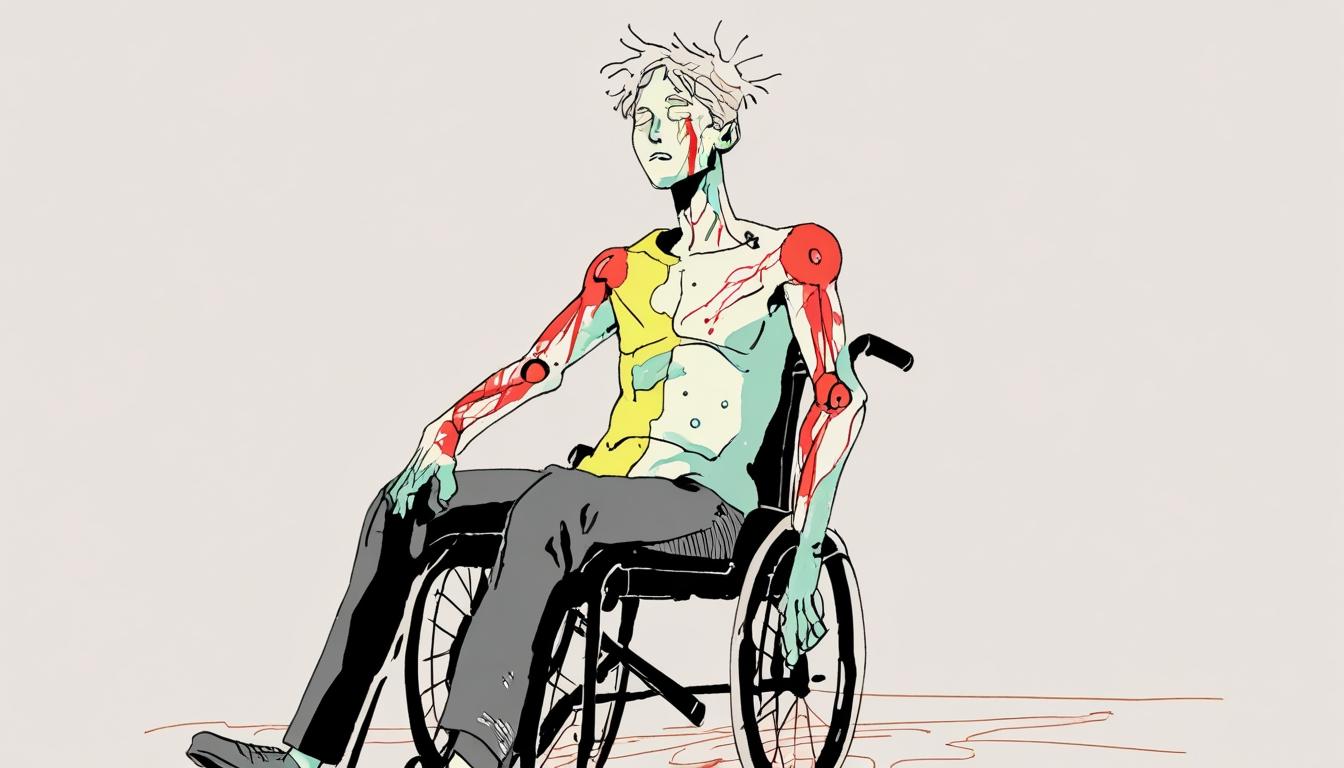At several prominent London venues this spring, art exhibitions and projects have brought the disabled experience into sharper focus, spotlighting the intersections of disability, art, politics, and societal oppression. These exhibitions articulate the complex realities faced by disabled individuals amid an increasingly ableist political and social landscape, underscoring the ongoing impact of welfare reforms and systemic ableism in the UK.
At Goldsmiths Centre for Contemporary Art (CCA), the Feminist Duration Reading Group recently conducted a collective reading of extracts from Alice Hattrick’s book Ill Feelings. Published four years ago, this work offers a personal chronicle of illness misunderstood by the medical profession, and explores mother–daughter relationships through art and literature. Hattrick’s narrative challenges the misconception that disability is solely a biological or individual issue, framing ableism instead as a pervasive societal oppression shaping disabled people’s experiences. Reflecting on recent political developments, Hattrick pointed to the 2025 Labour government's announcement of the UK’s largest cuts to disability benefits, which are expected to affect almost half of working-age claimants. "Politicians are calling the cuts a ‘shake up’, to make them sound lively rather than what they are, which is life-threatening," Hattrick said in the reading group, highlighting that many with arthritis, multiple sclerosis, cancer, and other conditions will lose vital financial support.
Hattrick shared the example of their mother, who lives with myalgic encephalomyelitis (chronic fatigue syndrome) and recently lost £75 a week due to stricter eligibility criteria for Personal Independence Payments (PIP). The assessment process, designed to judge daily living capabilities through a points system, often fails people with fluctuating conditions, as it did in this case when their mother’s ability to sew was misinterpreted as a sign of maintained dexterity.
The exhibition at Goldsmiths also featured works by German artist Galli, whose neo-expressionist paintings and drawings from the 1980s and 1990s reveal wounded, genderless figures inhabiting stark, liminal spaces. Galli's work explores the body as a battlefield reflecting universal struggles with oppression, underscoring how physicality and constraint can articulate broader human experiences beyond disability-specific narratives.
In parallel, the Whitechapel Gallery hosted Visceral Canker, a survey of Donald Rodney's work from the late 1980s until his death in 1998 from complications related to sickle cell anaemia. Rodney, an influential figure in the UK’s BLK Art Group, used medical imaging techniques such as X-rays and electron microscopy to expose the intersections of racial and medical violence. His works illustrate how his body was subject to racialised interpretations within medical contexts, as he was perceived to endure more pain due to his race. Significant pieces include In the House of My Father (1997), a photographic print depicting a fragile miniature house made of slices of his own skin, linking his personal illness experience to family and ancestry.
Another London venue, the Wellcome Collection, is presenting two exhibitions engaging with disability history and culture. Christine Sun Kim and Thomas Mader’s 1880 THAT remembers the 1880 Milan conference where deaf educators were pressured to suppress sign language in favour of oralism. The exhibition uses sculpture, film, and installation to critique the lasting negative effects of this decision on Deaf culture. Additionally, Zines Forever! DIY Publishing and Disability Justice showcases zines created by disabled artists worldwide, offering intimate, community-driven reflections on living with disability, critiques of the welfare system, and explorations of disabled identity within a capitalist society. Notably, these exhibitions incorporate accessibility features such as British Sign Language video guides, audio descriptions, visual stories, and relaxed openings.
Artist and writer Johanna Hedva, known for their essay Sick Woman Theory and recent book How to Tell When We Will Die: On Pain, Disability, and Doom (2024), has discussed the challenges faced when advocating for accessibility in art institutions. Hedva emphasises that demands for access accommodations often lead to being ignored or disinvited, despite accessibility being a crucial political matter connected to larger systems of oppression including white supremacy and transphobia.
These cultural events arrive in the context of a UK population where an estimated 16.1 million people, or nearly a quarter, have a disability. The exhibitions and associated discussions push against individualist myths that frame disabled people as burdens or lesser contributors. Instead, they promote a vision of interdependence, mutual care, and systemic change.
The ArtReview is reporting these developments, illustrating the vital role of art in challenging entrenched political and social ableism while marking the disabled experience as an integral, shared aspect of human diversity.
Source: Noah Wire Services
